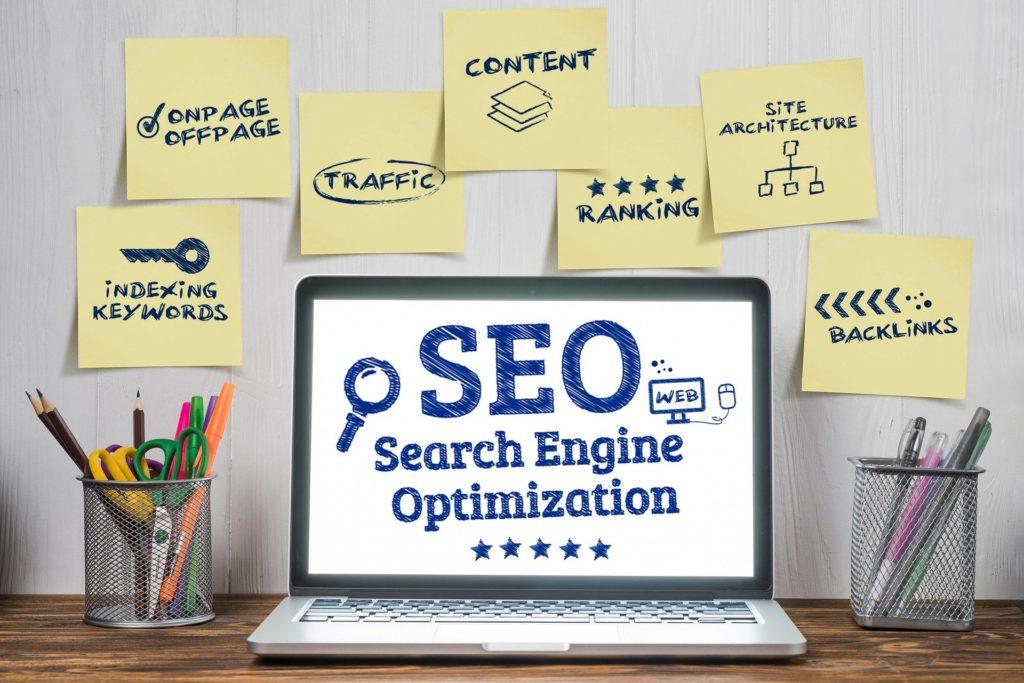To understand Search Engine Optimization and its purpose, you’ll first need to understand the fundamentals of a Google search. Yes, there are other search engines, but as of this post over 90% of searches are performed via Google.

Indexing
Google’s search engine is essentially a very large digital filing cabinet of millions of websites. It adds new websites frequently and categorizes them based on the content within. When someone types a phrase into the search box Google will find what it thinks are the most relevant and highest quality websites to be presented on the search engine result page.
Content Optimization
Google wants to provide its users with the best experience possible when using its search engine. To do this, Google gives preference to websites with lots of great content. The amount of new content also plays a role in where you rank on a search engine result page, as Google wants to provide the most up to date content available.
With your content, it is important to remember that while search algorithms have advanced significantly over the years, Google can only function with the data it understands. Understanding how to structure data so that search engines can build a complete profile on your website becomes of paramount importance.
Keyword research is arguably the most important part of content optimization. Start by collecting data on keywords that are relevant to your website’s content. Of course, you will want to go for keywords that have a high monthly volume, but it is important to understand the difference between informational and transactional keywords.
- Informational Keywords: Typically vague and are likely someone just looking to gather information on a topic.
- Example: Home Theater Systems
- Transactional Keywords: More specific to the intent of making a purchase.
- Example: Home Theater Installation near me
Focus on keywords and phrases that have a high intent to convert into a lead, even if they have less volume.
After completing the keyword research, the collected data needs to be organized into a keyword map. This involves systematically assigning 1-2 keywords to each page on a website. Once the plan is set, it is time to go to work implementing the keywords into the Title, URL, Headings, Images, and of course the text itself. Don’t stuff keywords where they don’t fit naturally. Google’s algorithm picks up on irregularities and you don’t want visitors scratching their heads trying to make sense of your website.
Link Building
Arguably the most important, yet most misunderstood aspect of SEO is link building. Think of a Google Search Result page as a popularity contest. In order to “win” the top spot, you must get the most votes of confidence from other websites Google already trusts. Treat a link as a vote of confidence on your own website as well, because Google explores what websites you are linking to. If your site is full of links to spam-filled garbage then Google will be less likely to send users to you. Getting listed in local directories, guest posting, and press releases are great ways to get started building a link profile for your website.
Technical SEO
When it comes to the technical side of things, SEO focuses on three main points.
- Site Speed
- Site Errors
- Instructions for search engines
Site Speed
Many things affect the speed at which a website loads. A few of the main things we look for as an SEO company are links to redirected pages, too many JavaScript files, image loading, and website hosting. Following the new Page Experience update, Google has emphasized the importance of having a fast and interactive website for the best user experience.
Site Errors
The most well-known site error is a 404 error. This happens when a user clicks on a link that takes them to a page that has been either removed or has broken code. It leaves the user with no other option than to hit the back button or exit the website entirely. Too many 404 errors can be detrimental to page rankings.
Instructions for Search Engines
As mentioned previously, search engines can only act on the data they understand. In some instances, it may be necessary to give search engines instructions on how to explore and display a website. For example, if there are multiple pages with the same content or content that originated from another website, you should you a canonical tag to tell search engines whom to assign equity to for a page. Not doing so may result in ranking penalties. Another example would be to tell a search engine not to index or display a page entirely, like certain archives or a payment information page.
Why SEO?
Search Engine Optimization focuses on bringing organic search traffic to your website. On average, organic searchers have a higher conversion rate and cost less than paid traffic.
To find how Firestarter SEO can help get more people to your website, schedule a free consultation today!


